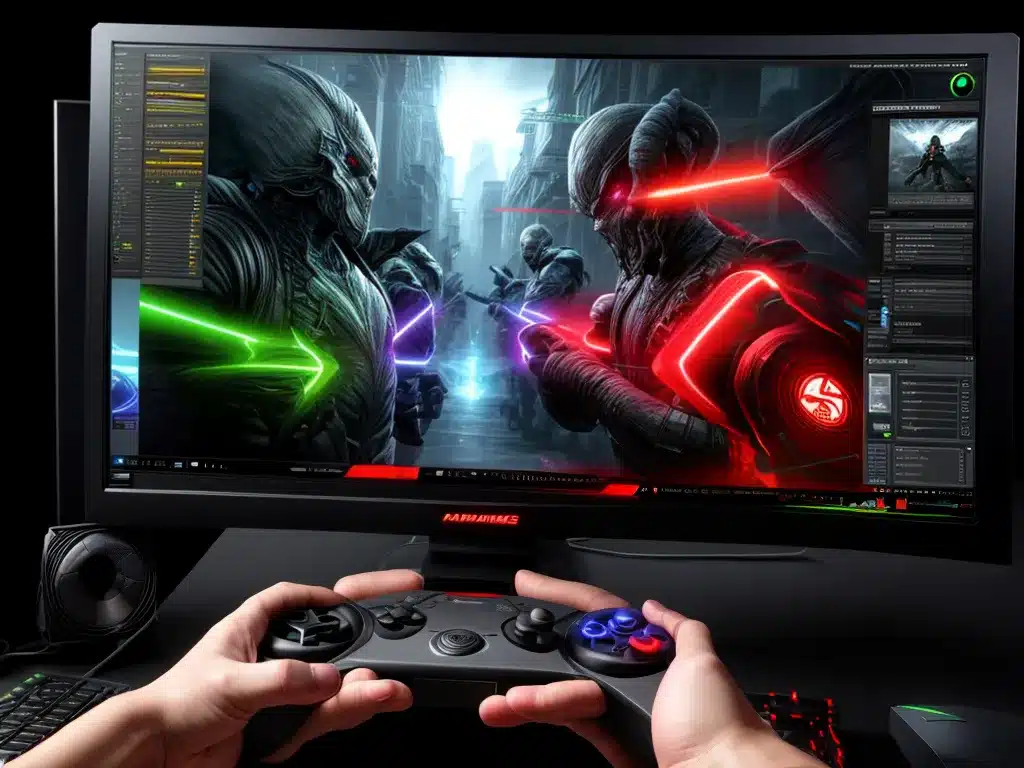
Introduction
Gaming on a PC requires having the latest graphics drivers installed to enable your graphics card to perform at its best. Over time, graphics drivers can become outdated or corrupted, leading to a drop in gaming performance. Reinstalling your graphics drivers is one of the easiest and most effective ways to improve gaming performance on a PC.
In this guide, I will walk you through the entire process of reinstalling graphics drivers for Nvidia and AMD graphics cards in order to boost your gaming performance.
Preparing For a Graphics Driver Reinstallation
Before reinstalling your graphics drivers, it is important to do some preparatory steps:
-
Backup important data – In rare cases, a driver reinstallation can cause issues, so make sure to backup any important data first.
-
Update Windows – Make sure you are running the latest version of Windows by checking for and installing any available updates. Up-to-date Windows versions help ensure compatibility with latest drivers.
-
Uninstall old graphics drivers – Use the dedicated uninstall utility provided by Nvidia or AMD to fully uninstall your current graphics drivers. This ensures a clean slate for the new driver installation.
-
Restart your PC – Restart your PC to clear out any remnants of the old driver files.
Downloading the Latest Graphics Drivers
Once your PC is prepped, it’s time to download the latest graphics drivers:
For Nvidia GPUs:
- Go to Nvidia’s driver download page.
- Enter your Nvidia GPU model and operating system.
- Download the latest Game Ready driver.
For AMD GPUs:
- Go to AMD’s driver download page.
- Select your AMD GPU from the dropdown and enter OS.
- Download the latest Adrenalin driver.
Always get the drivers directly from the manufacturer’s website to ensure you get the official stable release.
Performing a Clean Install of Graphics Drivers
Once you have downloaded the latest drivers, it’s time to install them:
-
Disconnect internet – Disconnect from the internet to prevent Windows automatically installing drivers.
-
Use clean install option – Make sure to check the clean install option in the driver installer to fully clear old files.
-
Restart – Restart your PC after the driver installation is complete.
-
Reconnect internet – You can now reconnect to the internet if you had disconnected.
-
Check device manager – Open device manager and check if your GPU is detected with the new drivers.
A clean install ensures all traces of the old driver are removed and new drivers are freshly installed for maximum performance.
Verifying Improved Performance
After completing the driver reinstallation, you should verify that your gaming performance has improved:
-
Run gaming benchmark tools like 3DMark to test for increased FPS.
-
Monitor gaming sessions for reduced stuttering and lagging.
-
Check forsmoother gameplay and graphics when playing demanding games.
-
Compare against gameplay using the older graphics drivers.
-
Run in-game benchmark tools if available.
If you continue experiencing performance issues, you may need to troubleshoot other factors like PC components, game settings, etc.
Keeping Graphics Drivers Up-to-Date
To maintain performance, it’s important to keep your graphics drivers regularly updated:
-
Set the graphics driver software to automatically check for updates.
-
Periodically check graphics vendor websites for newer drivers.
-
Update to newer drivers if you face gaming issues after a Windows update or upgrading GPU.
-
Clean install new graphics drivers after a major Windows version upgrade.
Keep graphics drivers up-to-date to take advantage of optimizations, stability fixes and performance improvements.
Conclusion
Reinstalling graphics drivers using the latest stable release from your GPU vendor is a quick and simple way to boost gaming performance on a Windows PC. With the steps provided above, you can easily prep your system, install the newest graphics drivers cleanly, verify performance improvements and keep the drivers up-to-date. This can help resolve a wide range of graphical issues you may face when gaming and lead to noticeable gains in FPS, visual quality and overall stability.












